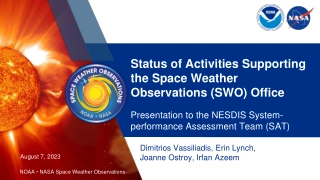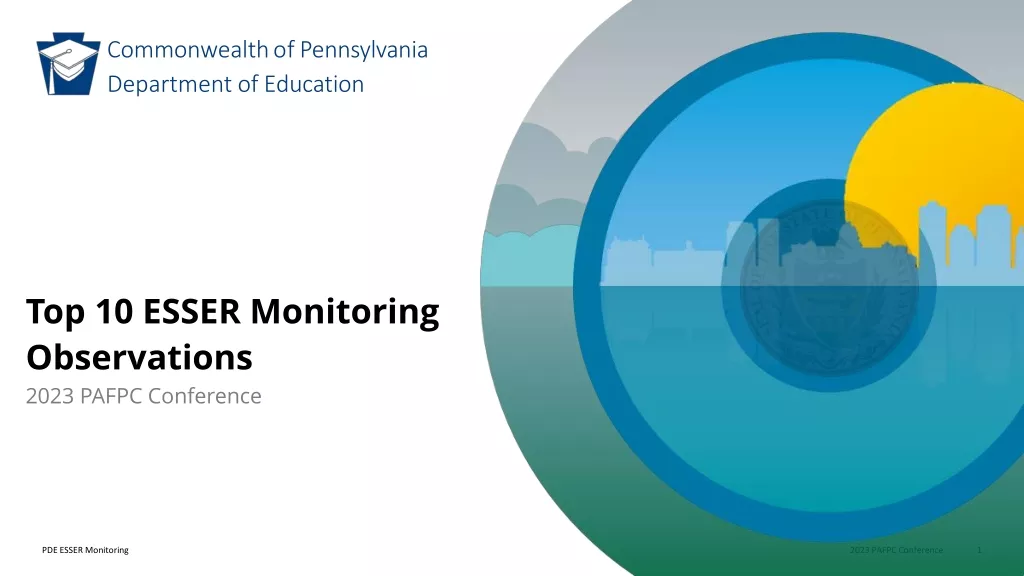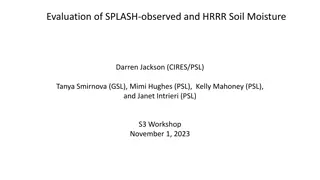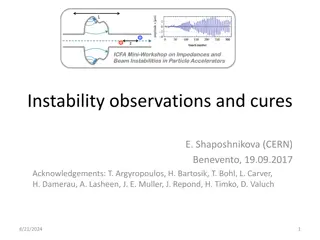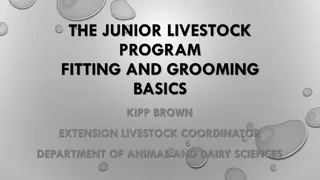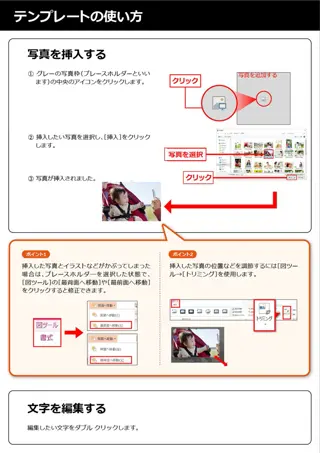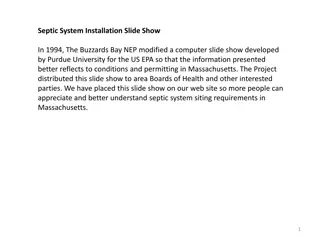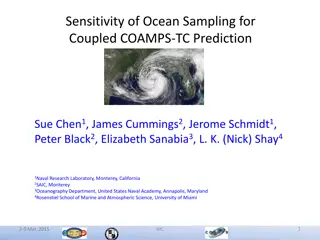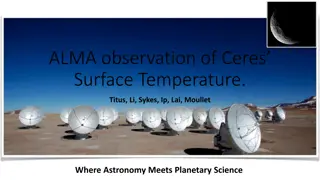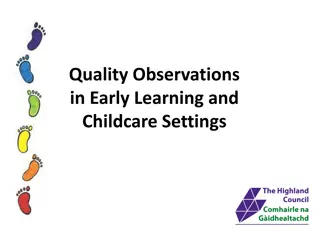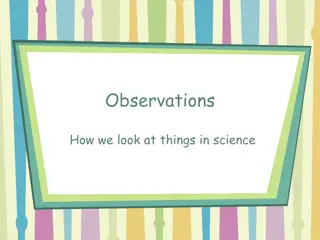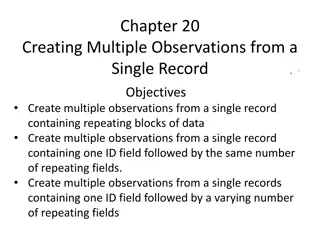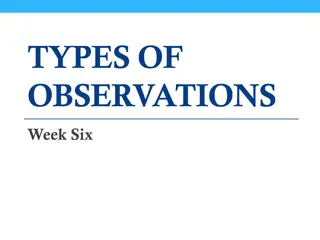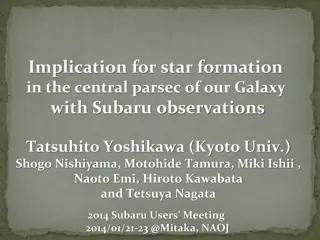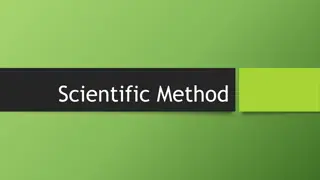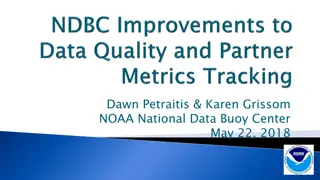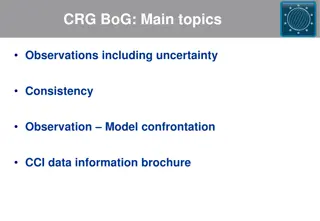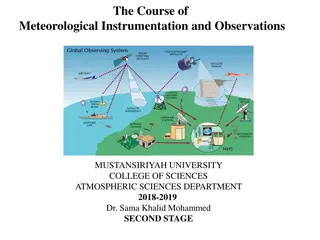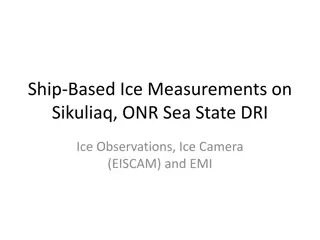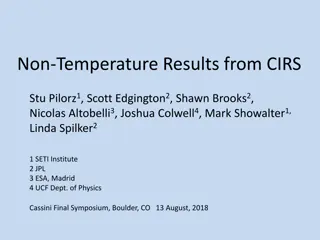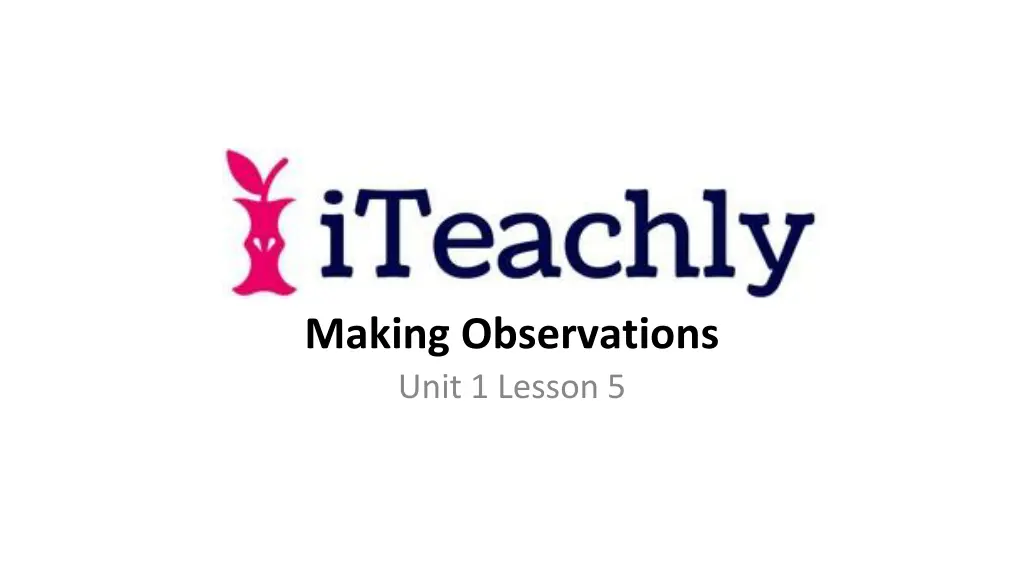
Understanding Observations in Science
Learn the significance of making observations in science, including types such as qualitative and quantitative observations using senses like sight, taste, and touch. Explore how observations can lead to making inferences and hypotheses.
Download Presentation

Please find below an Image/Link to download the presentation.
The content on the website is provided AS IS for your information and personal use only. It may not be sold, licensed, or shared on other websites without obtaining consent from the author. If you encounter any issues during the download, it is possible that the publisher has removed the file from their server.
You are allowed to download the files provided on this website for personal or commercial use, subject to the condition that they are used lawfully. All files are the property of their respective owners.
The content on the website is provided AS IS for your information and personal use only. It may not be sold, licensed, or shared on other websites without obtaining consent from the author.
E N D
Presentation Transcript
Making Observations Unit 1 Lesson 5
Making Observations Observation: An observation is an active acquisition of information from a primary source. Making observations requires using the senses. Observation can also be recording data during an experiment.
Making Observations Types of observations: Qualitative observations. Are observations made using our 5 senses. Sight Taste Touch Hearing Smell Examples: color or scent Quantitative observations: Are a way to make an observation is by measurement. That kind of observation is known as a Examples: length or height
Making Observations Sight: You can obviously use your eyes to make observations. You can see a reaction take place and know that it was a chemical reaction because there was a color change or maybe the substance now has a different look. Maybe even light was produced during the reaction. If you make observations with your eyes don t forget to write them down.
Lets ask questions & make observations! What can you observe here? What can you see here? Does the man at the table look like he s in a good mood? The man at the table is smiling as he reads a book, so yes, it appears that he is in a good mood. Has the man at the table eaten his dinner yet? It looks like the man hasn t started eating his sandwich yet, so we can make the inference that no, it does not appear he has eaten his dinner yet. Do we think the man might let the two friends join him for dinner? Based on the observations we made my hypothesis would be: If I ask the man to join him for dinner, then he would say yes.
Making Observations Taste: Making observations using a sense of taste is not usually used in a lab setting but can be used if you are doing a science experiment that involves food or drink. If something tastes spicy, sweet or bitter this can tell you some of the characteristics of the food.
Making Observations Touch: You can use your sense of touch to describe different textures, densities, or other physical properties of an object. For example, if you were trying to make a hypothesis about which pillow would best break the fall of an egg from the top of the building you could feel the pillows to see which one was the thickest and softest before making your inferences and hypothesis.
Making Observations Hearing: Making observations using your hearing or even devices that can detect sound can be very valuable especially if you are trying to determine which materials are good at reflecting or absorbing sound. Our ears are also good at determining pitch and frequency and recognizing what sounds are coming from.
Making Observations Reminder: If you need to smell something in the lab setting, waft it! Never directly smell any chemicals. Smell: Sometimes odor can tell you if there is a chemical change taking place. Many chemical reactions produce an odor that let us know something has changed. Some chemicals such as sulfur produce a rotten eggs smell that lets you know what chemicals are being produced.
Time to think What kind of observations did we make about the scene before? Answer: Qualitative Observations! What are some quantitative observations that we could make about this scene? There are 3 people in this scene. This is a quantity of persons that is measurable. There is only one chair in this scene. Also a quantity that is measurable What kind of hypothesis statement could we make with this information? My hypothesis would be if the man let us join him for dinner then we would need to find chairs if we wanted to sit at the table.

